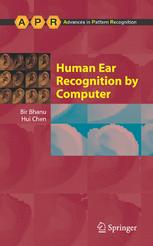

Most ebook files are in PDF format, so you can easily read them using various software such as Foxit Reader or directly on the Google Chrome browser.
Some ebook files are released by publishers in other formats such as .awz, .mobi, .epub, .fb2, etc. You may need to install specific software to read these formats on mobile/PC, such as Calibre.
Please read the tutorial at this link: https://ebookbell.com/faq
We offer FREE conversion to the popular formats you request; however, this may take some time. Therefore, right after payment, please email us, and we will try to provide the service as quickly as possible.
For some exceptional file formats or broken links (if any), please refrain from opening any disputes. Instead, email us first, and we will try to assist within a maximum of 6 hours.
EbookBell Team

5.0
18 reviewsBiometrics deals with recognition of individuals based on their physiological or behavioral characteristics. The human ear is a new feature in biometrics that has several merits over the more common face, fingerprint and iris biometrics. Unlike the fingerprint and iris, it can be easily captured from a distance without a fully cooperative subject, although sometimes it may be hidden with hair, scarf and jewellery. Also, unlike a face, the ear is a relatively stable structure that does not change much with the age and facial expressions.
Human Ear Recognition by Computer is the first book on the automatic recognition of human ears. It presents an entire range of computational algorithms for recognition of humans by their ears. These algorithms have been tested and validated on the largest databases that are available today. Specific algorithms addressed include:
• Ear helix/anti-helix based representation
• Global-to-local registration
• Ear recognition using helix/anti-helix representation
• Ear recognition using a new local surface patch representation
• Efficient ear indexing and recognition
• Performance prediction for 3D ear recognition
• Generality and applications in computer vision and pattern recognition
This state-of-the-art research reference explores all aspects of 3D ear recognition, including representation, detection, recognition, indexing and performance prediction. It has been written for a professional audience of both researchers and practitioners within industry, and is also ideal as an informative text for graduate students in computer science and engineering.
Professor Bir Bhanu has been director of the Visualization and Intelligent Systems Laboratory (at the University of California at Riverside) since 1991 and serves as the founding Director for the Center for Research in Intelligent Systems. He also has considerable experience working within industry and is the successful author of several books. He is a Fellow of IEEE, AAAS, IAPR, SPIE and was a Senior Fellow at Honeywell Inc.
Dr. Hui Chen works alongside Professor Bhanu and has worked for Siemens Medical solutions and the Chinese Academy of Sciences.